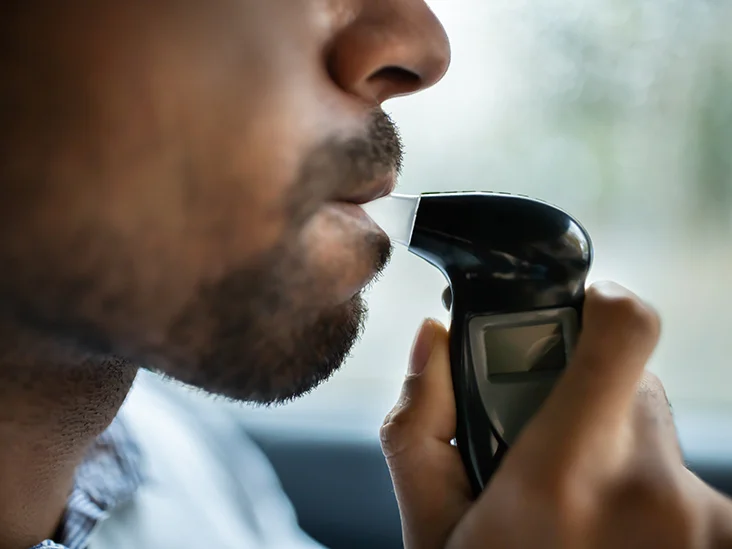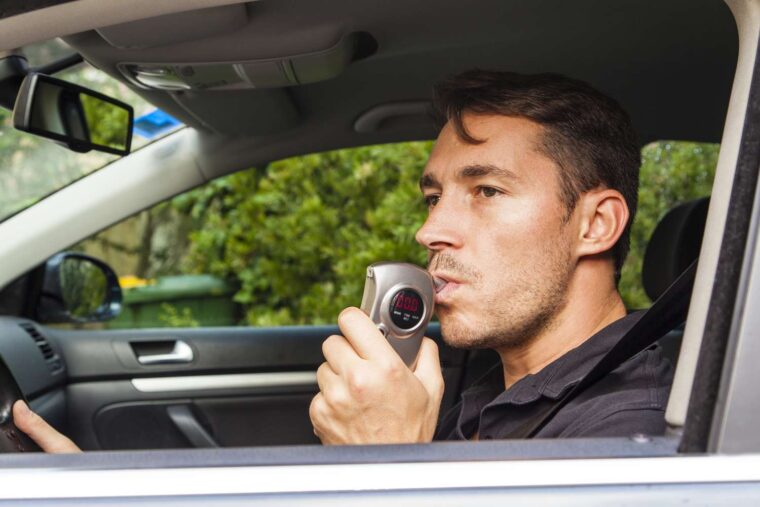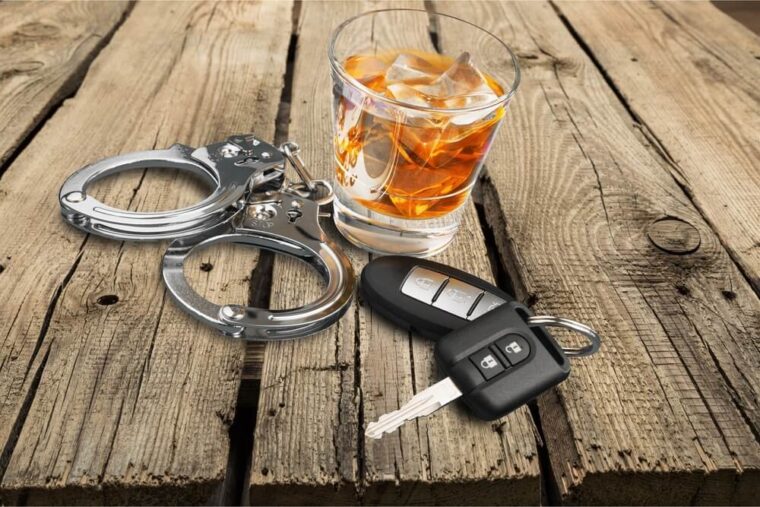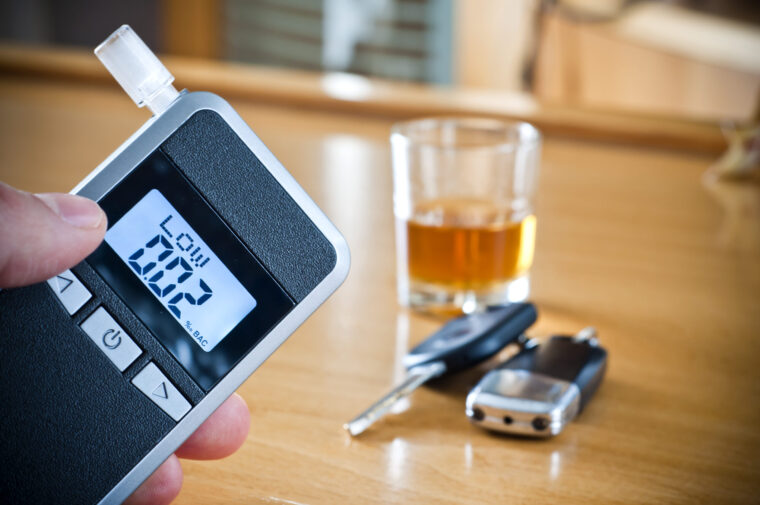In the realm of road safety, few concerns loom as large as the menace of drunk driving. It’s a scourge that not only jeopardizes the lives of those behind the wheel but endangers innocent passengers and pedestrians alike. The critical importance of sober driving cannot be overstated – every time someone gets behind the wheel after consuming alcohol, they’re playing Russian roulette with lives. It’s a daunting reality, but there’s hope on the horizon. Enter the breathalyzer – a potent tool that holds the potential to drastically reduce alcohol-related accidents.
Overview: Function of Breathalyzers in Preventing Drunk Driving

Breathalyzers, sophisticated gadgets that measure blood alcohol concentration (BAC) through breath analysis, have revolutionized the fight against drunk driving. These devices work on the principle of ethanol in the breath being proportional to ethanol in the blood. When a driver exhales into a breathalyzer, it accurately assesses their BAC level. If the level exceeds the legal limit, the device signals the danger of impairment, discouraging the driver from taking the wheel. This technology acts as a guardian angel, preventing countless tragedies by compelling individuals to make safer decisions.
Types: Explanation of Portable and In-Car Breathalyzer Options
Two primary types cater to diverse needs: portable and in-car options. Portable breathalyzers are handy gadgets that individuals can carry in their pockets or bags. These devices are useful for those attending parties or social events, allowing them to gauge their sobriety before deciding to drive. On the other hand, in-car breathalyzers are integrated into the vehicle’s ignition system. They demand a breath sample before the engine starts and may even require periodic tests while driving. These in-car systems provide real-time monitoring, ensuring drivers remain alcohol-free during the journey.
Accuracy: Discussing the Reliability and Precision of Breathalyzers

Accuracy is a topic of paramount importance. Fortunately, modern breathalyzers have come a long way from their early counterparts. Advanced sensor technologies contribute to their precision, with most devices boasting a margin of error within acceptable limits. However, it’s essential to note that external factors like residual mouth alcohol or technical calibration issues might affect readings. Regular maintenance and following usage guidelines are critical to ensuring reliable outcomes. Despite these nuances, they undeniably provide a valuable baseline for assessing sobriety and making safer decisions.
Benefits: Highlighting How Breathalyzers Enhance Road Safety and Awareness
The advantages of incorporating them into one’s road routine are manifold. Firstly, they serve as an undeniable deterrent against drunk driving, reminding individuals of the potential consequences. By fostering personal accountability, they empower people to make informed choices. Moreover, these devices contribute to heightened awareness about alcohol consumption and its immediate effects. As drivers become more conscious of their BAC levels, they gain a greater appreciation for their own well-being and that of others on the road. Thus, breathalyzers cultivate a culture of safety that ripples through communities.
Legal Aspects: Exploring the Legal Implications and Regulations Related to Breathalyzers

From a legal standpoint, breathalyzers hold a dual role. They act as preventative measures, ensuring drivers adhere to permissible alcohol limits. Furthermore, they offer crucial evidence in the aftermath of accidents. Many jurisdictions have embraced this technology by implementing laws that require installation in vehicles of individuals with prior DUI offenses. Ignition interlock devices, a form of in-car breathalyzers, exemplify this approach. Drivers must blow into the device to start the car, and if alcohol is detected, the engine remains immobilized. Such regulations underscore the commitment to curbing drunk driving.
Integration: Steps to Seamlessly Include Breathalyzer Use in Daily Driving Routine
Integrating breathalyzer use into your daily driving routine need not be arduous. Start by understanding your BAC limits based on local regulations. Portable breathalyzers are convenient companions for gauging sobriety before heading home. In-car systems might require an adjustment period, but they ultimately become second nature. Cultivate the habit of testing your BAC each time you plan to drive after consuming alcohol. This simple routine could be the difference between a safe journey and a catastrophic mishap.
Education: Promoting Awareness About Blood Alcohol Concentration (BAC) Levels

Education plays a pivotal role in widespread acceptance. Understanding how BAC levels correlate with impairment is essential. Many people remain unaware that even a seemingly small BAC can significantly hamper driving abilities. Educative campaigns can unravel the science behind BAC and underscore the dangers of overestimating one’s capabilities. Schools, community centers, and social media platforms all serve as fertile ground for disseminating this crucial information. By debunking misconceptions and fostering understanding, we pave the way for a safer road culture.
Social Responsibility: Addressing the Role of Individuals in Curbing Drunk Driving
The fight against drunk driving transcends legislation and technology; it hinges on collective responsibility. Each individual must recognize their duty to safeguard lives. Friends and family can encourage each other to use breathalyzers and make sober driving the norm. By intervening when someone intends to drive under the influence, you could be saving their life. Together, we can build a network of accountability that reshapes societal norms and replaces recklessness with conscientiousness.
Technology Trends: Touch on Advancements in Breathalyzer Technology and AI

This technology is not stagnant; it’s evolving alongside the digital age. The integration of artificial intelligence (AI) is propelling breathalyzers into the future. AI algorithms can refine readings by considering variables like body mass and metabolism. Additionally, smartphone apps that connect to portable breathalyzers provide real-time monitoring and even summon a ride if a user’s BAC exceeds safe limits. These advancements signify a powerful fusion of innovation and safety, demonstrating the potential of technology to transform road safety landscapes.
Conclusion: Reinforcing Commitment to Safer Roads Through Breathalyzer Adoption
In the grand symphony of road safety, they compose a harmonious melody. Their presence acts as a constant reminder that responsible driving isn’t just a personal choice – it’s a collective duty. By incorporating them into our driving routines, we’re actively participating in the reduction of accidents and the preservation of lives. With technology refining their accuracy and society embracing their significance, breathalyzers have the potential to be the beacon that guides us toward safer roads, where the music of joyous journeys plays on, uninterrupted by the tragedies of impaired driving.
